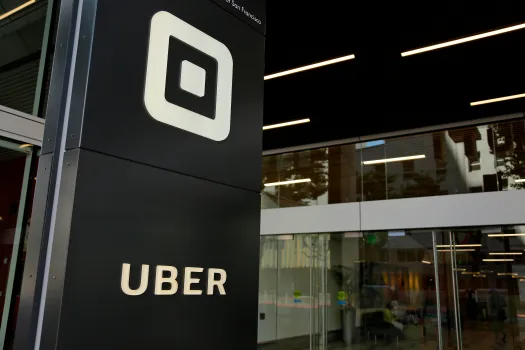Uber Technologies Inc. (NYSE: UBER) has entered 2025 with renewed investor interest, driven by its recent stock performance and contrasting assessments from prominent analysts.
As of January 6, Uber’s stock price has shown a notable recovery, trading around $64.59, up by 2.28% during intraday trading. This surge highlights investor confidence, but beneath the surface lies a complex story of innovation, competition, and strategic recalibration.
The Push from Goldman Sachs
Goldman Sachs recently added Uber to its coveted Conviction List, reiterating its “Buy” rating and setting an ambitious price target of $96. Goldman’s bullish outlook rests on Uber’s robust market share, international growth, and ongoing improvements in operational efficiency.
The ride-hailing giant’s cost management initiatives, including optimized driver incentives and investments in high-margin segments like Uber Freight, align with investor expectations for profitability. Moreover, Uber Eats continues to perform well, particularly in emerging markets, making it a key growth driver.
The Shadow of Autonomous Vehicles
However, not all is rosy. JMP Securities downgraded Uber to “Market Perform,” flagging the potential disruption posed by autonomous vehicles (AVs).
Competitors like Waymo and Tesla are rapidly expanding their robotaxi operations, with Waymo recently securing additional regulatory approvals for driverless fleets in multiple U.S. cities.
Uber’s own investments in AVs have yet to translate into large-scale deployment, raising questions about whether it can keep pace with the AV revolution. While AVs promise lower operating costs in the long term, they also represent a competitive threat, particularly if regulators favor established AV players.
Slowing Growth and External Pressures
Another factor weighing on Uber is the deceleration in gross bookings. In Q3 2024, bookings grew by 16% year-over-year to $41 billion—a respectable figure but slower than previous quarters. Increased insurance costs in critical markets like New Jersey and California have also eroded margins, while a recent dip in weekend ride bookings has raised concerns about demand elasticity.
A Divided Analyst Consensus
Wolfe Research has positioned Uber as one of its top internet stock picks for 2025, with a price target of $92.
This endorsement highlights the divergence in analyst sentiment. While some see Uber as a transformative player with long-term growth potential, others remain cautious about the company’s ability to navigate rising costs and intensifying competition.
What’s Next for Uber?
Uber’s performance in the coming months will depend on its ability to balance immediate profitability with strategic investments in innovation. The rise of AVs, ongoing regulatory challenges, and shifts in consumer behavior are all factors that could reshape its trajectory.
For investors, Uber represents both an opportunity and a risk. Its expansive business model, encompassing ride-hailing, food delivery, and freight, offers diversification but also exposes the company to a myriad of operational challenges.
As 2025 unfolds, Uber’s capacity to adapt to these dynamics will be a litmus test for its resilience in the face of a rapidly evolving industry.
In conclusion, Uber’s stock trajectory underscores the importance of innovation and adaptability in a competitive market.
While its current momentum is encouraging, investors would do well to watch for developments in AV technology and regulatory shifts, which may define the company’s long-term success.
Also Read
Carnegie Grocery Store Shut Down After Health Inspectors Find Serious Violations
Carnegie Grocery Store Shut Down After Health Inspectors Find Serious Violations

